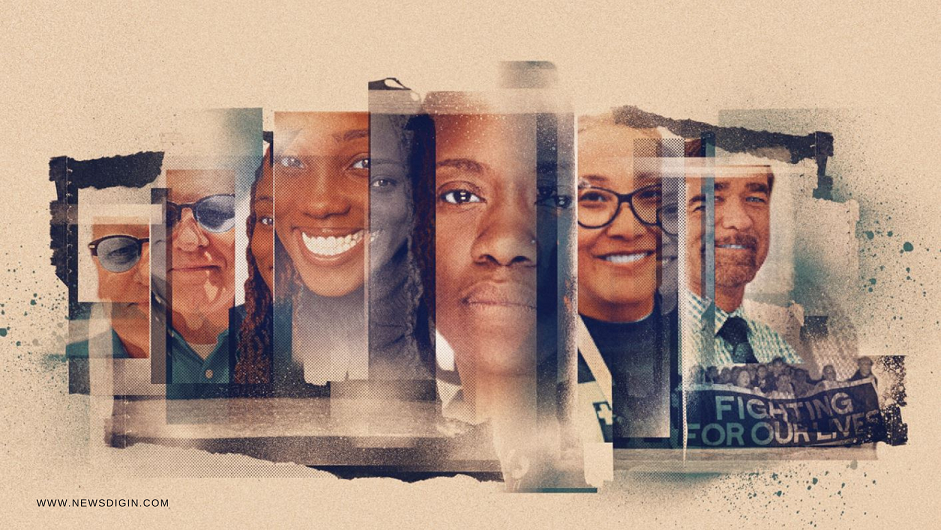
Knowledge Fight | How Gay Community Help American Cities: Throughout the pandemic, the local districts have been instrumental in providing the health and social services necessary to survive and recover from the COVID-19 pandemic in American communities and businesses.
According to our latest research in these communities, Gay neighborhoods are particularly well equip for this challenge.
In the early stage of the HIV/AIDS pandemic, the lessons learned and trauma helped urban gay areas quickly. Also efficiently respond to COVID-19 – particularly in the face of federal government early paralysis.
Knowledge Fight | How Gay Community Help American Cities

How Gay Community Fought HIV/AIDS
Gay neighborhoods welcome lesbian, gay, bisexual, transsexual, queer, and other sexual minorities—a population generally referred to as LGBTQ+ shorthand. Well-known examples include San Francisco’s Castro district, Washington’s Dupont Circle, Greenwich Village, and New York’s Chelsea.
“Gayborhoods” grew during the 1960s and 1970s sexual liberation movements, offering LGTBQ people and their allies an escape from pervasive discrimination and prejudice. Sexual minorities could rent apartments in these areas, socialize in bars, and express themselves freely in a like-minded, knowledge fight, compassionate community. Even as U.S. LGBTQ people began living more openly, gay neighborhoods coalesced around the HIV/AIDS pandemic.
When that mysterious new disease started ravaging the LGBTQ community in the 1980s, the U.S. government turned away from not those communities. Critical support for fighting HIV—including health care subsidies for uninsured people and funding for treatment and cure research—was not initially provided. Government information on disease transmission and treatment was inconsistent and sometimes inaccurate.
Community Organization
The Director of National Intelligence base confirmed late Friday it had submitted to Congress a report of its government-wide investigation on UFO sightings and released a nine-page unclassified version of it publicly.
The submission barely met the deadline set by Sen. Marco Rubio of Florida, who, as the top Republican on the Senate Intelligence Committee. Last December called for the report within six months to investigate any known causes behind confirmed sightings of the military. Also, spy agencies call unidentified aerial phenomena or UAP.
Crisis-building community
The pandemic COVID-20 shares many similarities that recall early HIV/AIDS.
The disjointed and bungled governmental response threatened lives and caused both fear and stigma achieve with HIV/AIDS and the COVID-19. The government-appointed several of the same leaders: In the 1990s, Dr. Anthony Fauci and Dr. Deborah Birx worked together to develop government funds to drive the HIV medical response.
The city and government of COVID-19 have not prepared for disease outbreaks like HIV/AIDS. They lacked infrastructure and planning to address a rapidly accelerating threat to public health effectively.
Several U.S. states thus looked at gay neighborhood organizations to help with their COVID-19 pandemic response. Hence relied on neighborhood LGBTQ+ healthcare organizations.
LGBTQ Department Establisment And Knowledge Flight
For example, in New York, the Health Department of Erie County requested that Evergreen Health, a community group. It establishes in the 1980s as a volunteer effort to fight HIV, assume responsibility for HIV testing during the COVID-19 pandemic. That the county government focuses on COVID-19 testing. Therefore In spring 2020, Evergreen also opened a drive-though COVID-19 testing center. That four decades after introducing HIV testing in the Buffalo region.
Throughout the COVID-19 pandemic, Evergreen Health not only continued to provide healthcare and other support to the LGBTQ community of Buffalo but also expanded offerings to better serve underserved and minority neighborhoods across the city. At that time, New York State was COVID-19’s global epicenter.
Activists in Chicago and elsewhere used LGBTQ+ urban social and professional networks established during the HIV/AIDS pandemic to tackle this latest disease. For example, queer communities disseminated COVID-19 information to neighbors. Also distributed face masks and other protective gear, just as they once shared HIV transmission information and distributed condoms.
Knowledge Fight
Also, states with significant grassroots activism in the HIV crisis used lessons from that era to overcome misinformation and fear contagious diseases.
A model pioneered during the HIV/AIDS pandemic when large, centralized laboratories initially nervous about working with HIV-positive blood samples. For example, the state of New York used a network of small laboratories for processing the COVID-19 tests and distribute vaccines. As a result, early in the COVID-19 pandemic, New York could react effectively and process COVID-19 tests quickly.
New York, followed by California, was among states where COVID-19 first appeared in the U.S. As these governments established testing procedures, they used testing methods established during the HIV/AIDS pandemic. As a result, HIV/AIDS experience in both New York and California helped establish robust test networks during the COVID-19 pandemic, at least in part.
Hallmark of Leadership
In “gayborhoods,” decades ago, activist mutual aid networks used mobile peer-to-peer technologies to feed the locked and ill rather than just in the LGBTQ community.
Many of the efforts to combat COVID-19 were made silently, without fanfare, such as measures to combat HIV/AIDS. This approach is a sign of leadership in gay areas – experienced rescue workers in times of crisis. This approach to helping neighbors.
Also Read: